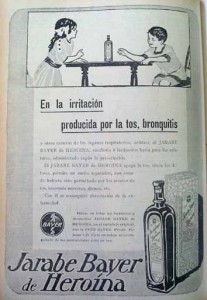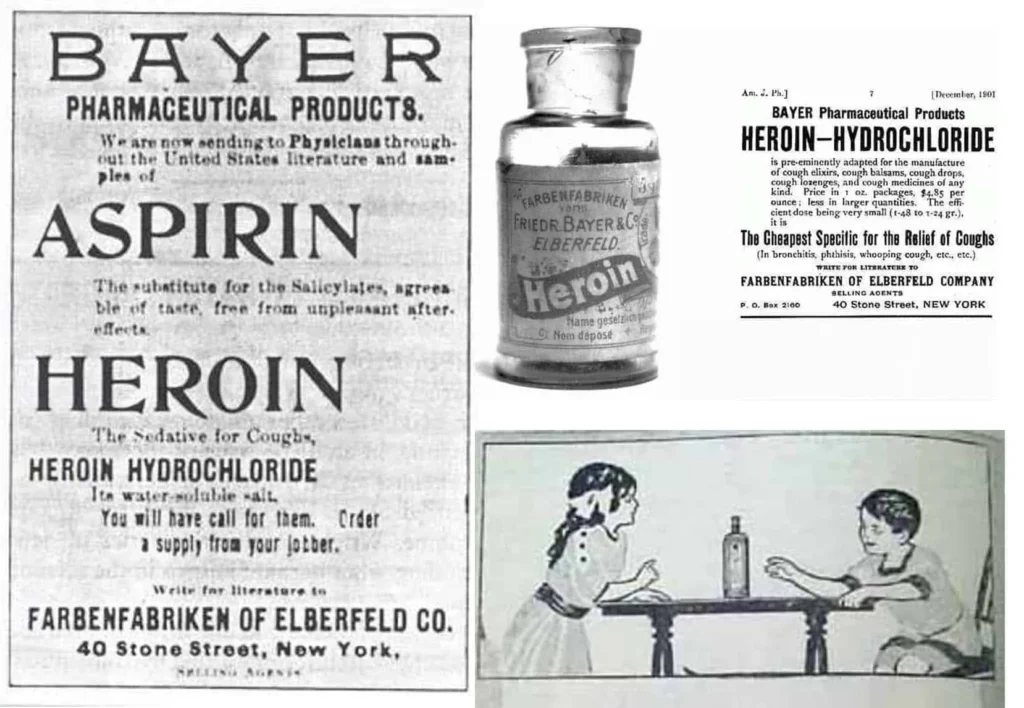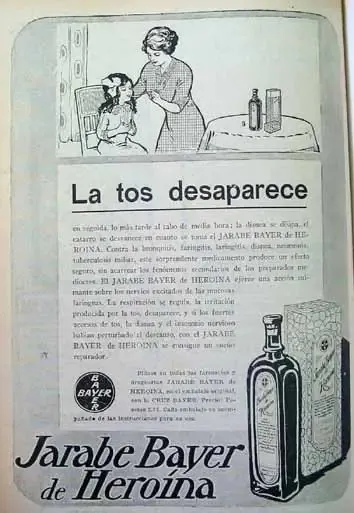October 10, 2024 Hidden history
Pharmaceutical companies have a long history of selling dangerous products for profit despite warnings.
Heroin. Pharmaceutical companies’ long history of selling dangerous products

In the spring of 1912, Bayer began advertising in Spanish newspapers about the benefits of one of its new drugs, heroin.
Soon after its introduction, doctors discovered that it was addictive.
But Bayer also commissioned advertisements, mostly featuring children, recommending that it be taken even for simple throat irritations.
Soon there was no disease for which the “magic formula” was not recommended : multiple sclerosis, asthma, stomach cancer, epilepsy, schizophrenia, intestinal colic.
Thousands of free samples were given to doctors.
And when critics questioned the safety of the “wild card” drug, Bayer’s then-CEO Carl Duisberg ordered his staff to “silence” the troublemakers :
“We cannot allow the world to think that we are recklessly promoting inadequately tested drugs”.
The commercial success of heroin laid the foundation for Bayer’s rise from a paint manufacturer to a global multinational.
This affair illustrates the long tradition of multinational pharmaceutical companies to sell dangerous products against all reasonable judgment and despite strong warnings, for the sole purpose of making easy profits.

In 1874, English chemist and physicist C.R. Wright synthesized heroin by mixing and boiling morphine with acetic anhydride in the facilities of St. Mary’s Hospital Medical School in London.

Experimental results (tests on dogs and rabbits) showed unpleasant side effects of the new compound : anxiety, insomnia and vomiting.
So Wright abandoned his research.
But more than two decades later, the German chemist Felix Hoffman, under the supervision of another German scientist, Heinrich Dreser, conducted new laboratory experiments at the pharmaceutical company Bayer.
The two discovered that the substance was “effective” in treating several common diseases, a result that prompted Bayer to launch the new drug on the world market.
It was advertised not as diacetylmorphine, but under its more famous name of “Heroin”.
Production for medical use began in 1898.
Initially sold as a non-addictive substitute for morphine, and therefore usable for treating coughs, this new “wonder” soon became available in pharmacies in many countries around the world.
In addition to treating coughs, doctors soon began prescribing heroin to people with recurring headaches or women suffering from premenstrual syndrome.
Sometimes it was prescribed simply to treat a cold.
Heroin was available over the counter, while a bizarre advertising program delivered free samples to mailboxes.
In 1914, diacetylmorphine arrived in the United States.
It was also available for medical use, along with a few other drugs in the opioid family.
But within a decade, the effects of heroin were being felt across the country, with hundreds of thousands of “induced” addicts, some of whom contributed to the rise in crime in the US.
It was not until 1924 that the use of heroin for medical purposes was permanently banned in the United States.














